Episode 10
The First Americans Museum (with heather ahtone)
Show Sponsor
Landslide Creative provides custom website design and development for museums who want to increase their engagement and connect with their visitors, donors, and volunteers. Stop fighting with your website and focus on growing your impact. Visit LandslideCreative.com to learn more.
Show Notes
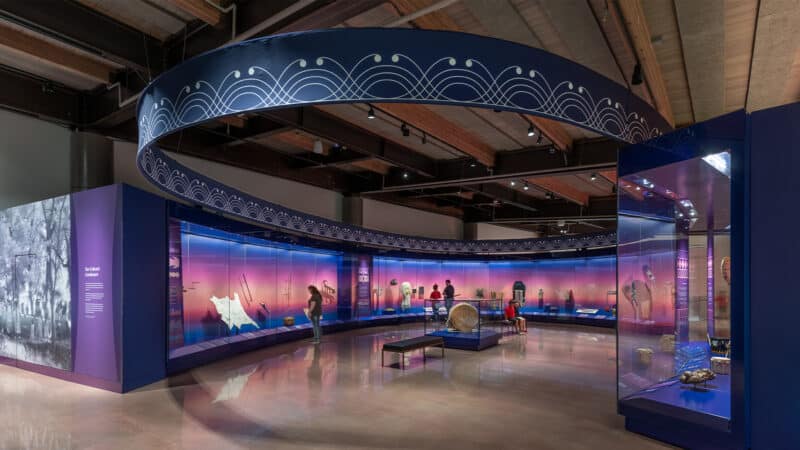
About the Episode
There are 39 First American Nations in Oklahoma today, each with their own distinct culture and traditions. The newly-opened First Americans Museum in Oklahoma City is dedicated to telling all their stories—no small undertaking. In this episode, I speak to Dr. heather ahtone, FAM’s Director of Curatorial Affairs. She shares the history behind the museum, the Indigenous philosophy underpinning their exhibitions, and the way they are modeling Native-centered museum practices that honor Native lives and objects and let First Americans speak for themselves.
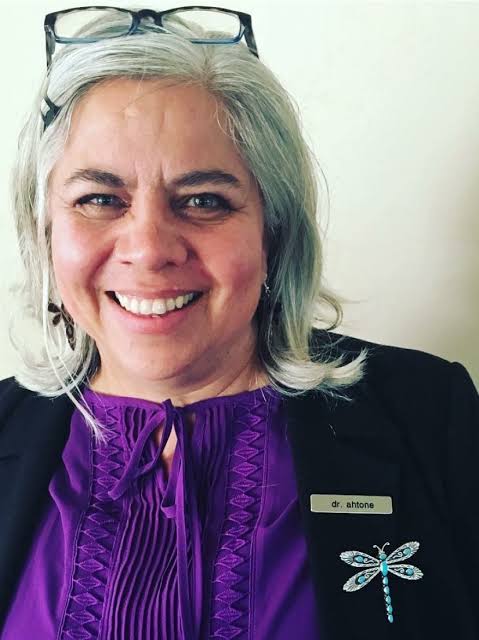
About our Guest
heather ahtone is Director of Curatorial Affairs at First Americans Museum (FAM) in Oklahoma City, Oklahoma. She and her team developed the inaugural exhibitions for the 175,000 sq. ft. facility the stories, culture, and arts of the 39 Tribes of Oklahoma as a national story of survival, resistance, and resilience. She has worked in the Native arts community since 1993 and has an established career as a curator, arts writer, and researcher. Additionally, Dr. ahtone is serving as founding faculty for the Institute of American Indian Arts’ MFA program in Arts and Cultural Administration. ahtone has worked at the Institute of American Indian Arts Museum (now MoCNA), the Southwestern Association of Indian Arts (Santa Fe, New Mexico), with Ralph Appelbaum Associates (New York), and in several positions at the University of Oklahoma (Norman, OK), where she served as the curator of Native American art at OU’s Fred Jones Jr. Museum of Art for over six years. Her current research explores the intersection between tribal cultural knowledge and contemporary arts.
She earned an associate degree in Creative Writing at the Institute of American Indian Arts, bachelor degree in Printmaking at the University of Oklahoma, master degree in Art History, and a doctoral degree in Interdisciplinary Studies (Art History, Anthropology, Native American Studies). She continues to seek opportunities to broaden discourse on global contemporary Indigenous arts. In addition, she is committed to serving the global Indigenous arts community and is a citizen of the Chickasaw Nation and descendant of strong Choctaw women.
Links
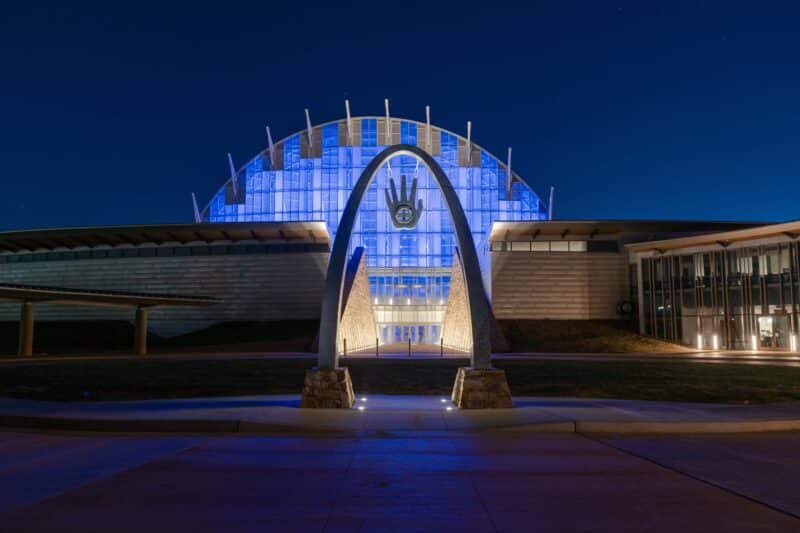
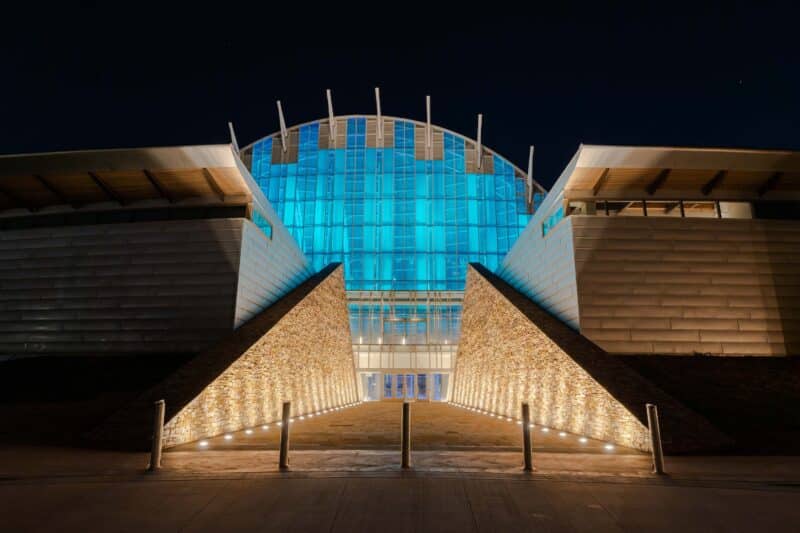
First Americans Museum Website
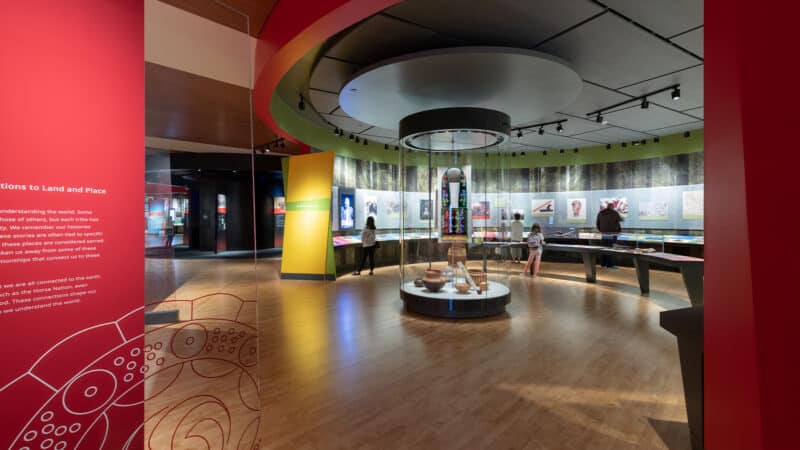
“First Americans Museum uses design metaphors of natural elements to honor native worldview” (Building Design + Construction, Feb 2023)
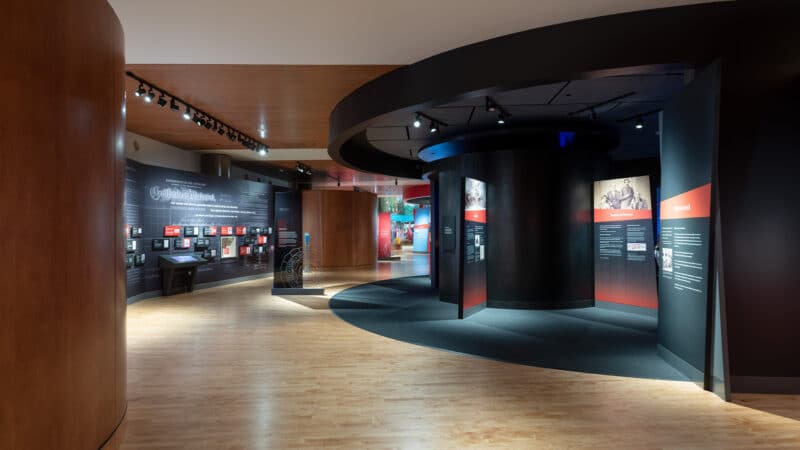
“Oklahoma’s First Americans Museum wins state and local history awards from [AASLH]” (City Sentinal, Jun 2023)
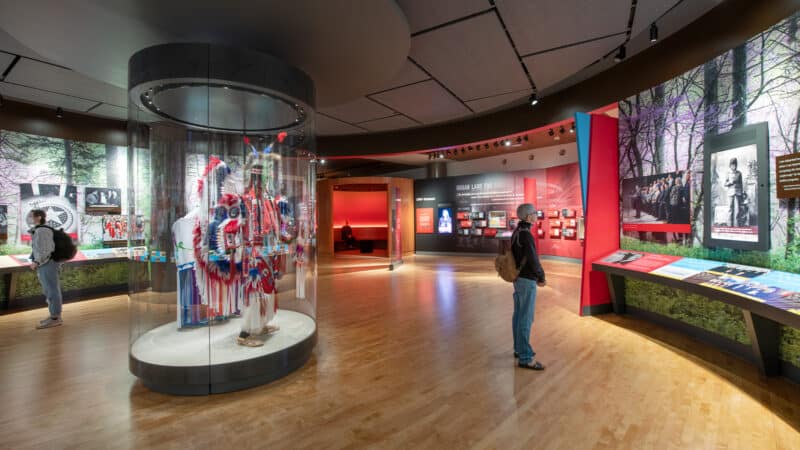
“First Americans Museum Opens In Oklahoma City Telling 39 Stories Simultaneously” (Forbes, Oct 2021)
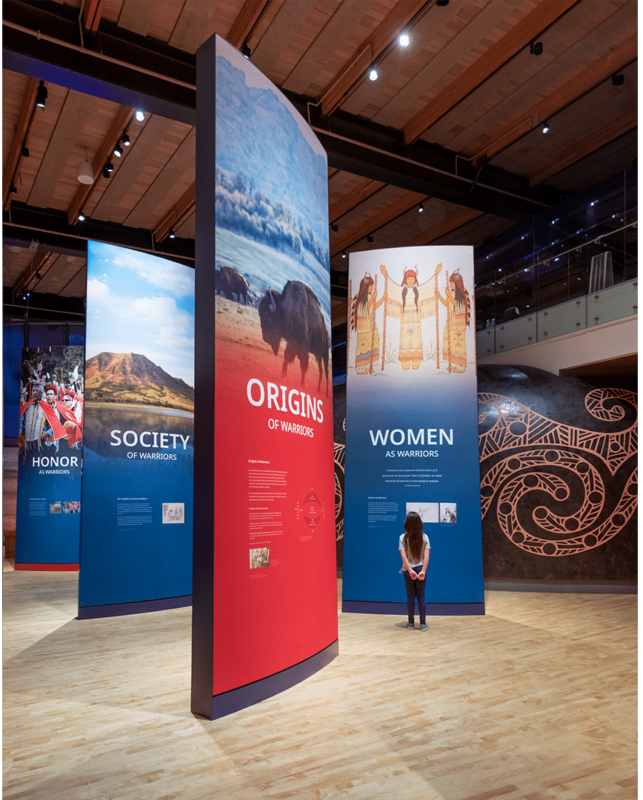
“Heather Ahtone named senior curator of OKC’s American Indian Cultural Center and Museum” (Oklahoman, Mar 2018)
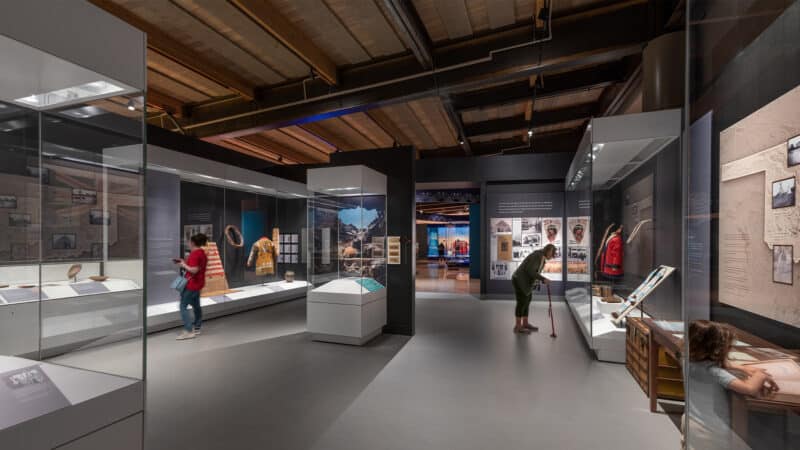
“Sherman Chaddlesone Arts and Letters Lecture: Dr. heather ahtone, senior curator of the First Americans Museum” (Recorded Lecture, Oct 2020)
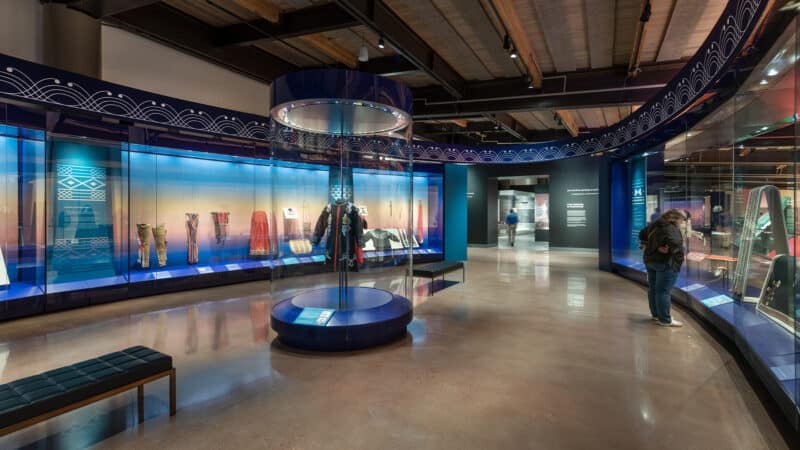
Transcript
Hannah Hethmon (Narration): Welcome back to We the Museum: a podcast for museum workers who want to form a more perfect institution.
I’m your host, Hannah Hethmon, Owner and Executive Producer at Better Lemon Creative Audio, where I make podcasts for museums, history organizations, and other cultural nonprofits.
The First Americans Museum in Oklahoma City opened in September 2021 with a unique mission – telling the stories of the 39 distinctive tribes in Oklahoma. As you can imagine, that’s quite the undertaking.
To learn more about the museum and its approach, I talked to heather ahtone, Director of Curatorial Affairs. heather and her team were responsible for all the exhibitions in this 175,000 sq ft museum. And, as you’ll hear, they had only a few short years to do it.
heather shared with with me the Indigenous philosophy her team used to develop their exhibitions, and the many ways this museum is modelling Native-centered, first-person museum practices in a space where individuals and tribes speak for themselves.
Before we get started, I want to shout out our show sponsor, Landslide Creative. This podcast would not be happening without their support. Landslide Creative provides custom website design and development for museums who want to increase their engagement and connect with their visitors, donors, and volunteers. With a custom website designed for the unique needs of your museum, you can stop fighting with your website and focus on growing your impact. Head over to LandslideCreative.com to learn more.
Alright, now let’s get into my conversation with heather ahtone, Director of Curatorial Affairs at the First Americans Museum, citizen of the Chickasaw Nation, and descendent of a long line of strong Choctaw women.
Hannah Hethmon: So tell me about the First Americans Museum. How would you describe it to someone hearing about it for the first time?
heather ahtone, PhD (Choctaw/Chickasaw Nation): Sure. So our mission is to serve the 39 tribes of Oklahoma. We’re a non-tribal museum operated by a private foundation, private nonprofit foundation. And we are a project that brings together constituents from the 39 tribes that are located in Oklahoma. Our tribes in Oklahoma are the product of the Indian Removal Act in 1830 that during the 19th century relocated forcibly 67 tribes into Oklahoma. And these tribes have settled here, have been here coming up on 200 years. And in the interim, it creates the most dynamic cultural environment in a lot of places, including this entire continent. We have more languages spoken in Oklahoma than Europe.
Hannah Hethmon: Wow.
heather ahtone, PhD (Choctaw/Chickasaw Nation): It would be comparable to considering relocating the 44 nations of the European Union onto the British island.
At that time, it was Indian territory, Oklahoma territory, and the 67 tribes have evolved into what are today the 39 tribes of Oklahoma. those tribal nations are the product of, for some tribes, have maintained their singular identity across the duration of that whole time. But for some of the other tribes, for instance, the Peoria tribe of Indians is actually an affiliation between four different tribes that came into the territories during relocation and decided to ally together out of both historical diplomatic relationships. and for the collective benefit of their citizenry.
Hannah Hethmon: Hmm. And so the museum has been open for less than two years, right, even though it’s been a long time in the making. So what has it been like seeing this vision come to life and getting to share the museum with the public? Talk to me about this initial period of the museum.
heather ahtone, PhD (Choctaw/Chickasaw Nation): Well, it’s been an amazing experience to be a part of it, both for the breadth of the responsibilities and the intensity of the schedule. As you mentioned, the project has been sort of in the works since 1994 when the first state legislative act was passed, founding the Native American Cultural Education Authority.
So, I was hired in 2018 to lead the exhibitions team for a museum that was opening in 2021 and that date was scheduled.
Hannah Hethmon: That’s not a lot of time.
heather ahtone, PhD (Choctaw/Chickasaw Nation): It’s not a lot of time and it was 26,000. It’s a whole wing; we had to build it and imagine what we could put into that space. I joined three women who were ready to take that on: Welana Queton, Leslie Halfmoon, and Gena Timberman had been carrying the vision for this internally for a while.
And as I joined, I brought the sort of curatorial experience both of working on large projects, but also working with the tribal community. I’ve done several projects before here where I did community-based curating. And so we imagined literally within six weeks what the gallery footprint was going to be. There was absolutely an immediacy for every decision that we had to make, but we also knew that there was only one failure and that was to not get open. And so holding on to the fact that as long as we got open for a project that had been in development for so long, we were going to meet everybody’s expectations just to get open.
But we understood the critical importance this was going to serve to our tribal community of telling the story of our tribal nations in a way that had never has never been told before. People speak on our behalf, many of our tribes have contributed as advisors to exhibitions done by other museums. Quite a few of our tribes actually have their own museums and tell their own story. But for us to have the kind of access that we do to our audience, which is an international audience, in our first year we had over 170,000 people visit, which during COVID times is kind of phenomenal, just on merit.
Hannah Hethmon: Yeah, that’s huge.
heather ahtone, PhD (Choctaw/Chickasaw Nation): But from every state and territory in the United States and 26 international countries visited. So in that first year, we knew that we had hit the mark, because of both the visitation and interest, but also because our tribal community just would come in and have these really emotional responses to what we had done telling their story.
And that was basically what our curatorial team was asked. As we consulted with each tribe, they said, help us tell our story. Well, how do you tell 39 tribal stories, right? And we didn’t wanna create a system of stables. Many natural history museums have done this, and it’s really ineffective. And so we really drew upon the toolbox of our Indigenous philosophies and ancestors.
I brought to the project a curatorial methodology that I had developed before I came here. All of the team adopted it. It is basically team-based collaboration, working with the four core Indigenous methodology tenants of respect, reciprocity, understanding relationships, and acting with responsibility. And by using those four core tenets, both amongst ourselves and with our consultations, with the tribal communities, we were able to draw upon the metaphor of a braid of sweetgrass. I don’t know if this is something you’re familiar with, but it is something many of our communities use as a medicine. And it is a long grass that, just by its mere name, you can imagine, smells very sweet.
And it is something that is actually used in many communities. It’s burnt, and the smoke of it actually helps with grieving. For me, this became a visual metaphor that helped everybody to kind of understand, you’re going to be in the whole story. You’re just not always going to be visible, right? If you’ve ever seen a braid, you don’t see all the hair at once. It’s just the certain hairs will rise to the top of the surface within the string though. that you find from the collective of that story. And so we use that braided sweetgrass as a metaphor for that.
I really do believe that the kinds of things that we’ve done by bringing to the fore through our exhibitions some of these incredibly difficult stories is actually generating a certain kind of healing. It’s not alone, it’s not gonna be able to do everything that’s needed, but I’m hoping that it contributes to something greater and it’s only really in retrospect that I’m able to see that metaphor of sweetgrass was more profound than we had anticipated.
Hannah Hethmon: Hmm. So you sort of answered my question about how do you tell the stories of 39 distinct tribal nations within a larger story that is all under-told in this space anyway? As you mentioned, a lot of museum spaces that are even dedicated to telling Native American stories are often focused on educating non-Native audiences. So thinking about your curatorial process and design process, what does it look like and feel like for people to visit a museum that is designed by and for the nations whose history and culture is on display? You know, what does that exhibit look like? What are some elements? Can you pull examples of that, of how that manifests in your design?
heather ahtone, PhD (Choctaw/Chickasaw Nation): All of us on our curatorial team—there were in the end 11 members of our curatorial team—so all of us as Native people, as citizens of tribes here in Oklahoma, with local relationships, had been in museums. And it is really hard and I think under-discussed what it is to be a Native person going into a museum. We can talk about the violence by which these objects that are in Native museums, by and large, particularly the historic materials, were often stolen from our tribal communities.
And that’s not even a that’s not an exaggeration. I mean, literally I have heard numerous stories of ethnographers who simply walked into someone’s home, had dinner, got treated well, and then grab something—a mask or a piece of sculpture off of a wall—and walked out. These are not exaggerations to say that these materials were simply stolen. But even when things were paid for, they were often paid for in a monetary exchange at a time when people were not really in a position to really hold onto things and assign them the type of value equal to the amount of intellectual and cultural value that they held.
And so this is key for us to understand that when things have been taken out of our community and placed in museums, the shifts of values is so significant for us that when a contemporary Native person goes into a museum with historic materials, it’s simply not uncommon to feel violated all over again.
And so it becomes cycles of violence that museums have instituted and really held as a practice, that with the assignment by museums of tribal identities that are often either erroneously applied or simply false in nature, these kinds of violations against our very political identities, our very spiritual selves, is incredibly harsh.
And so our team wanted to create a space where young Native people could come in and feel welcomed and feel safe. And that was something that as we were thinking of how we were going to be judged by our grandmas and our aunties, right? Like, look, I don’t know what it is to be a non-Native curator because my work has, the whole time I’ve been doing it, has really been driven by my community responsibilities, my relationships. But I know that my community, I know that my family members, they’ll be looking at these things and they’ll be wondering whether I was doing everything that I could to the best of my ability. And all of our team felt that way. And we felt it not only for our familial relationships, but we felt it for our extended relationships into the community.
And that being said, we wanted to create a place where people could come and feel safe and feel validated. and feel pride in a story that has been told by other people, but really has not had the opportunity to be as fully developed, at least for our Oklahoma tribes, as this center was providing.
Hannah Hethmon: I know many listeners won’t be able to get to the museum in person, so can you walk me through the two main galleries? What do visitors see, what do the spaces look like, what stories are being told…
heather ahtone, PhD (Choctaw/Chickasaw Nation): The first exhibition that you encounter is OKLA HOMMA, and it’s in our Tribal Nations Gallery. And it is that collective story where we use that braided sweetgrass as the metaphor. And so half of the story is chronological. And it goes through three chronological breaks, origins to 1830, which is the Indian Removal Act; and the Indian Removal Act to 1907, which is statehood; and then statehood to the present. So we really gave ourselves the room in the first zone to really establish for our audiences an Indigenous first-person voice. And working with a group of advisors that we call the knowledge givers, we worked with their advice to incorporate rhetorical sovereignty and shared authority, and we applied that into the development of the labels so that all the labels are written in a first-person, Indigenous, We voice.
That collective Indigenous voice is, I believe, one of the great strengths of what we’ve done in this exhibition and that we don’t have to argue with anyone else. We’ve simply taken the authority to speak on our own behalf. And that is an incredibly strong position to take. It also doesn’t force us to be antagonistic. I’m not trying to refute that other people have their own truths, but we’re gonna provide you a sense of what is truth to us and allow you to learn our story through our perspectives and get people to think what it means to be an American. Being an American is such a complex experience and it involves so many entangled histories.
Hannah Hethmon: We’ll be right back to my conversation with heather ahtone, but first it’s time for a digital minute with Amanda Dyer, Creative Director at Landslide Creative.
Amanda Dyer: Hi, I’m Amanda Dyer, creative Director at Landslide Creative, and I’ve got a quick tip you can use to improve your museum’s online presence when you’re looking to optimize your digital presence. Don’t forget about all the websites where your museum is represented, not just your own. For instance, the first encounter someone has with your museum online might be through Google Maps or TripAdvisor, or other local tourism sites.
Is your information up to date on these sites? Is it compelling? Take some time to update and optimize your listings. Check your hours and ticketing information for accuracy. Include high quality photos, respond to reviews and questions from visitors. Add links to helpful information on your site. You can learn more about optimizing your digital presence on our [email protected] slash digital.
Hannah Hethmon: And back to the episode:
heather ahtone, PhD (Choctaw/Chickasaw Nation): In that first zone, Origins to 1830, we really look at what was it like to be on this continent, to be a first American prior to contact. Origins to 1830, that experience of it being America is really just a small component of it. We don’t dismiss it, we don’t ignore it, we incorporate that part of the story as well. But we think about that long extended history of the emergence of corn as a sustainable superfood, right? Our original corn is something that is just like spread across the continent within a very short amount of period because it was such an important food source of sustenance for our communities. And each community took it in, right? And absorbed this food source. We look at how women were leaders. and that there was this gender balance within communities. And our creation stories which tell us that the earth was made for us by the creator—we have this responsibility to care for that earth and care for where we live and all of the things on it.
These are very different sort of worldviews and those were the worldviews that were here when the Europeans landed. And this creates, and we discussed this in the media that we have throughout the gallery, this creates a conflict of perspectives, right?
But in all of that, what I am really trying to bring to people’s light is that in all of this, we have held on to our creation stories. We still know how the creator made us. And I think about the sort of Biblical Genesis that came as part of the Christian expansion across the European continent. And by the time those European people were coming to the Americas, they had already lost their creation stories. And were living with a dominant singular idea of how the world needed to function. And we’ve been able to hold on within our tribal communities to our creation stories that link us as individuals within our communities all the way back to that moment of creation. And that’s an incredibly powerful position to hold within your own identity.
Equally powerful is that we are the link that connects that moment of creation to the future. And so we each have to carry those responsibilities with us. And it is those for the creation of the future. Right? Our Indigenous future depends on us holding on to our knowledge and our language and our philosophies. And so it’s really important for us to be able to do that. But here we are in the 21st century and we are still doing that.
And that kind of idea and that sort of philosophy informed the development of the exhibitions. Because we can speak to the difficult pasts, but we are building our future and that’s really important for people to feel. And our story goes through that contact with the U.S. from 1830 when Congress passes the Indian Removal Act and it basically facilitates the ethnic cleansing of the Southeastern part of the continent to the point of all the tribes being removed into Oklahoma and Indian territories. That period is incredibly traumatic. There’s a significant amount of loss.
We deal with that in a very straight-on way for our visitors so that they can get that story fully experienced within their core body, knowing that we were in a manner of speaking as curators, really planning an emotional gut punch with those stories. We asked our elders and our tribal leaders to speak to those difficult times. And then we had to select four stories that are told within that zone to speak to that difficult truth. I will tell you this was probably some of the hardest work I’ve ever done. I know it’s probably some of the hardest work our curatorial team members did. We had to basically re-traumatize ourselves of the harshness of those stories over and over and over as we edited it down to what we could fit within the gallery time and experience.
But as the visitors come out of those stories, they start to see how our tribes rebuilt, how our tribes have regained our sovereignty from the wrenches of the hands of, wrenched it from the hands of the United States government, and are really rebuilding within our territories here in Oklahoma, a space that is dynamic culturally, linguistically and incredibly economically significant as both the force within our state and our region. And those are not things to dismiss.
So we come out of the chronological story into a space where we can enjoy our culture, we can enjoy where we are, and that’s facilitated through our community voices theater, which is at the end of that chronological storytelling arc.
And then we continue on into the section, the other half, which is What is it to be a First American today? And it is an incredibly complex experience. We can see our cultures being facilitated through commercial and denigrated through various sorts of appropriation and stereotypical tropes that we have wrestled against for the last really 500 years. But out of that emerges this beautiful voice and we bring that out through images by our great Oklahoma master artists that show our culture in the way that we understand it to be beautiful and profound.
We have a little theater experience that is a powwow van. And in that powwow van, you get introduced to five tribes and how that flavor is slightly different in each of these places.
We also created a space where you can kind of go into an Indian home. It’s like a living room. It’s got family photos. Those photos are actually of our fam staff and their families because we wanted to show—we’re an 85% Native staff. And we wanted people to be able to see our faces as contemporary people taking selfies next to significant international monuments that people will recognize. It’s Indian families, Indian people doing Indian things is what we kind of called it.
Hannah Hethmon: Ok, so those are some highlights from the “OKLA HOMMA” exhibition. Then visitors head into the second gallery, which is home to an exhibition called, “WINIKO: Life of an Object, Selections from the Smithsonian’s National Museum of the American Indian. What’s that space like?
heather ahtone, PhD (Choctaw/Chickasaw Nation): So WINIKO: Life of an Object is an exhibition that is in three zones. It is co-curated with Welana Queton and Hallie Winter. In that exhibition, the tribes had absolute authority over what represented them, even as we were working primarily with the NMAI collection. And we wanted to collect those objects with the people and with the culture. And we enacted that in a couple of really concrete ways.
Connecting those objects with the culture—key for us is our knowledge that our languages are the mechanism by which we have held onto our philosophies across generations. And so our languages carry our prayers and our songs. They carry the recitations that are appropriate to our various ceremonial practices. And holding onto that language is really a significant effort and it’s critical to our retention of our culture. And so one of the things that we really wanted was we wanted to create a way for visitors to see all of our languages.
So in the WINIKO exhibition, the first thing you see on the object label is actually the object’s name and its Indigenous language. We have two tribes that have their own orthographic system. And so we use both Cherokee and Osage orthography to write that name. We know people aren’t gonna read it. They’re not going to understand what they’re looking at. But for us, it reattached that object with its original knowledge, its original community through that mechanism.
And then in the three zones, the first and the last zone, the first is Creation and the last zone is Continuum. We wanted to create a sense of what it is to be in our community for these objects. And the critical role these objects play in our community. And so in that, the casework actually forms an infinity symbol. The cases actually curve and represent the infinity of our cultures in the way that we are representing these objects and presenting them. And in that infinity symbol, the background is the color of the sky at dawn. And in the back part, it is the color of the sky at dusk. And these are critical moments of prayer for all of our communities.
Then there is a ribbon that connects the cases at the top, and that ribbon work is got a design on it called the Sky Domedesign, which represents the movement of the stars through the night and the cycles of the Earth’s movement as it goes through. So there’s a real sense of creating an exhibition that is cosmologically related and oriented and anchored within those spaces. There’s a looping cycle of songs, and these are songs that were selected with the communities, and they are by and large welcome home songs or blessing songs. And we know that our visitors enjoy them, they comment about it, and we’re happy that they enjoy it. But our curatorial intention was actually to put those songs in there for the objects, so the objects would know that we’re happy to have them home.
And on the labels, as you go around and you look at the various objects, on some of the labels you’re able to see images of the historic photos that were taken of the people who sold or made the objects. And on some of those labels, you also see a contemporary photo. And this is where we enacted that framework of connecting the objects with the culture and the people, in that we have been working to reconnect the objects with the descendants. Walena Queton did an enormous amount of research to connect these objects with the descendants. And we were able to do that for nine of the families.
Out of the nine objects we connected—with an extreme protocol for care— we were able to have three of the families actually come into the museum and spend a day with their objects. We discussed the object, the records that we had. We recorded all of this and there is a short film that plays in the gallery that speaks to those three families’ experiences. What it meant to them to know that the object existed and what it meant to them to actually be in touch with that object.
And because of the success of it and the incredible emotional impact of it, we are returning to that work and currently in the process of beginning to reach out back out to the tribes to try and navigate, can we connect any more families now that we’re past COVID, with their objects. That’s all being done in cooperation with the National Museum of the American Indian. We appreciate their support. And we’re also receiving funding to support this work from the Ford Foundation, the Henry Luce Foundation, and the Terra Foundation. And we have an application into the NEA, so I’m hoping good things for that as well. But our plan is to really be able to try and connect as many of these objects with their families as we can.
Now I mentioned that first in the last zones of WINIKO. Where the infinity symbol crosses is the only square room in the whole wing. And it is in that room where we go from this beautiful technicolor environment and creation and continuum to a monochromatic treatment of really examining what it looks like for when objects are taken out of our communities and put into institutions. Wwe really wanted to do was to look at what happens to the shift of values when objects are taken from our community and placed in an institution, both a shift in monetary value, a shift in the knowledge value related to it. And we look at the history of museums as sites of violence. We look at, we discuss very openly the role that museums have held in taking human remains and objects that are of sacred manner to our tribes and holding them as prisoners within collections.
Of course, NAGPRA, which is the Native American Graves Repatriation Protection Act, requires museums that receive federal funds to return these things. And that passed in 1990. And yet, here we are in 2023. And there are over 200,000 ancestors who remain trapped in museum collections across the continent. So these are things that we want to bring out. We’re not. poking a finger at anybody in particular, but people need to know why when Native people go in the museums that these places are points of particularly emotionally stressful environments, even as we appreciate being able to see things from our own communities. We appreciate seeing them, but we also understand their presence in a museum often represents a significant loss in our community.
The community has responded well, both the tribal community, which has been very clear to point out where we’ve made errors and we’re gonna correct those errors. I will say of our methodology, respect, reciprocity, relationships and responsibility, “being right” isn’t one of those. So we will always respond to our community and try and listen to things that people want us to do better. There are fairly small minor things that people have asked us to do and we have taken those to heart. We’re working our way through that process.
Hannah Hethmon: Wow. It just sounds like there are so many layers of meaning and care and community woven—just like you said, woven with the metaphor—just worked into every single component, every single aspect of the galleries. And I’m just blown away that you did that in three years. Uh, that is… That is incredible!
heather ahtone, PhD (Choctaw/Chickasaw Nation): And I have to tell you that first year after we got open, I was doing my best to just try and help my team recuperate.
Hannah Hethmon: I’m sure everyone was exhausted.
heather ahtone, PhD (Choctaw/Chickasaw Nation): Emotionally, but also just physically. Yeah, we were working crazy long hours.
Hannah Hethmon: And it’s just a huge emotional responsibility to the material as well. Just an incredible undertaking. So I guess just to wrap up, I know most of my listeners are going to be non-Native people who work in museums. And a lot of the museums are going to be telling stories about Native people. What can the wider field learn from your museum? What lessons can they take from what you have done about how to tell better histories of Native American people and how to tell better stories with and for them as well?
heather ahtone, PhD (Choctaw/Chickasaw Nation): Well, I think that the key of it is to let the Native people speak for themselves. And I think that’s what we really made a conscientious choice. And we help our visitors understand that that’s what’s happening, that we’re telling the story from a different voice than what museums have in general. Museums are seen as authoritative voices publicly. And so I think it is, the work has been getting better working with Native communities. I think about the sort of shifts over to doing consultations, advisory groups, and that kind of work.
But really, I think the key of it is to share that authority. And I think that was for us where we really were able to gain the buy-in from the tribal communities when we were saying, these are the stories we’ve planned, but tell us what you want to have there, and we’ll help make it work. We just have to work it into this system. W e assured them, it wasn’t our role as a museum to tell their entire history. It was simply a role for us to bring to light the collective histories of all of this.
But I think where museums are, fostering a responsibility to their local communities will be valuable. And then really sharing that authority and allowing the tribal communities and the tribal people with whom they work. to author those labels, to be the ones who can write them because speaking in a third person voice, which many labels are often written in, feels very removed, right? And it lacks the sort of emotional impact that can so often be the impact you’re trying to convey. And so figuring out how to allow those voices to come in and de-centering whiteness as the primary voice, I think is an incredibly powerful mechanism. And that’s not me being racist about it. It is simply understanding that there are a multiplicity of perspectives and worldviews and allowing that authority to shift does not mean that your work is not important. It simply allows that there can be other voices.
And as we embrace the deeper, richer, and many times very difficult stories of our American past, we become better citizens by that experience, and we create empathy and expand our understanding of things that maybe we really never really did have a chance to understand.
Hannah Hethmon: Well, thank you so much. I really hope to visit the museum myself in the near future. And I really appreciate you sharing your insights.
heather ahtone, PhD (Choctaw/Chickasaw Nation): I hope you do. Let me know if you come this way.
Thanks for listening to We the Museum. You’ve been listening to my conversation with heather ahtone, Director of Curatorial Affairs at the First Americans Museum in Oklahoma City, OK.
For show notes with links to subjects discussed in this episode and a transcript, visit the show website: WeTheMuseum.com.
You can learn more about the First Americans Museum at famok.org.
Once again, a big thank you to our show sponsor, Landslide Creative. Making a podcast takes a lot of time and energy, and I wouldn’t be able to set aside the space to make this show without Landslide Creative’s financial support. If your museum is considering a new website, definitely make Landslide Creative your first stop.
Finally, I’ve been your host, Hannah Hethmon. As Owner and Executive Producer at Better Lemon Creative Audio, I help museums around the world plan, produce, and edit podcasts that advance their missions. Find out more about my work at BetterLemonaudio.com

